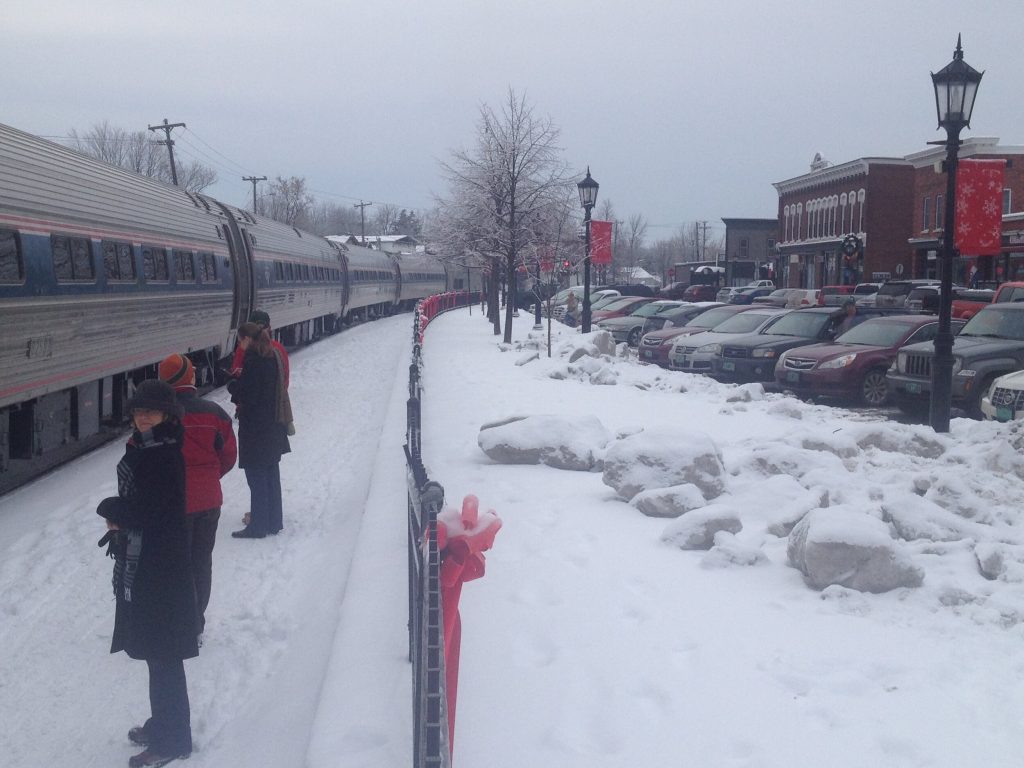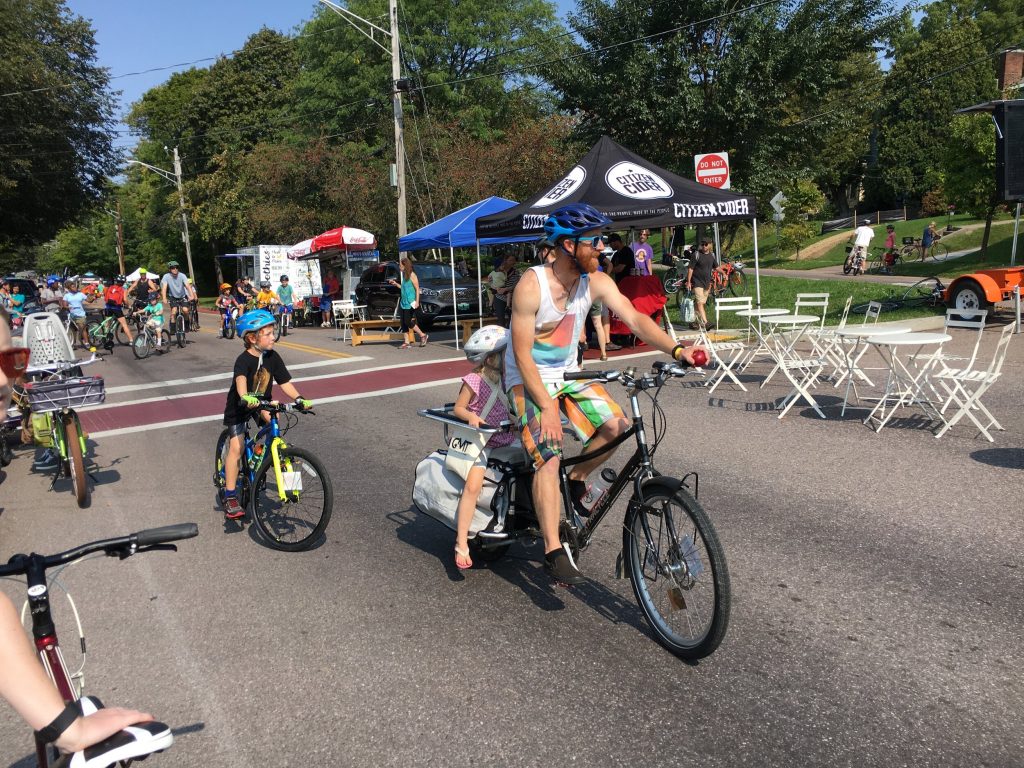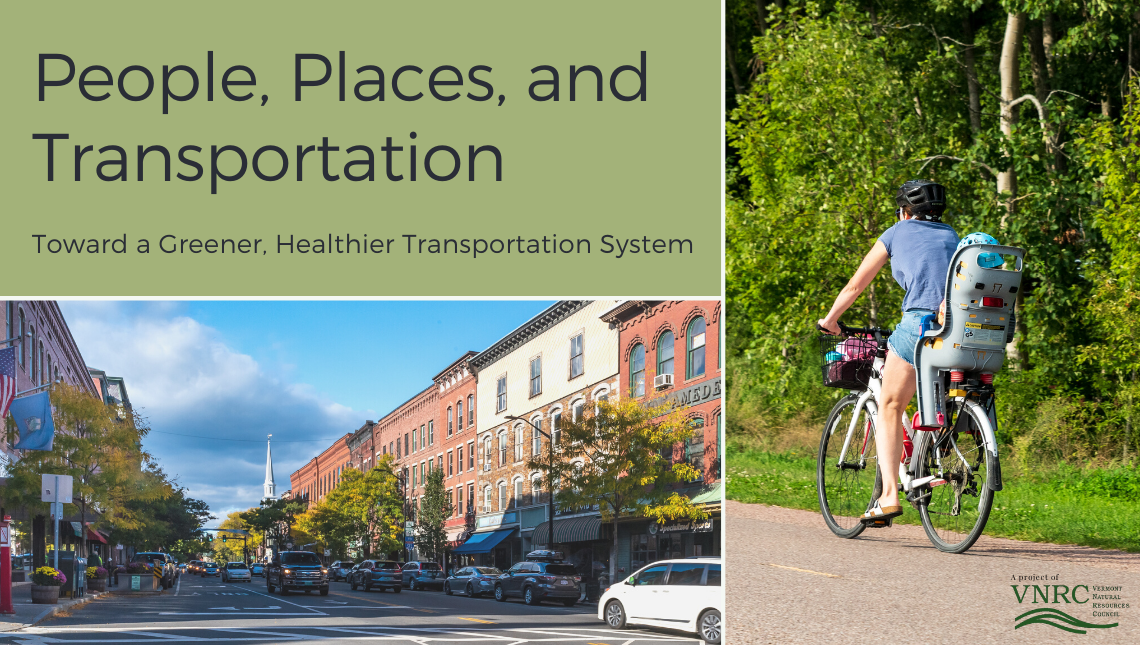By Brian Shupe
What comes to mind when we think about transportation today?
For most of us, it’s the daily experiences of getting around. Even if we are interested in walking, biking, taking the bus, and carpooling, we probably think mostly about cars and roads. When we think about our transportation future, perhaps it’s flying cars, but more likely it’s electric ones.
It’s only human to start from what we see and experience. But what if, when we thought about transportation, we thought about downtowns, villages, walking and biking, housing, local economic development, and multigenerational communities just as readily as we thought about cars and roads? What if we had more examples of what is possible?
Together, we can envision a future where Vermonters living in rural communities can rely on public transportation to get to work, in all seasons. We can imagine what would happen if municipalities no longer required a minimum number of parking spaces to be created when new developments were constructed. We can contemplate how an increase of affordable housing in downtowns could reduce or even eliminate car use, and improve affordability, for many.
In its highly regarded blog, Sustainable Transportation Vermont came at these scenarios with a variety of expert voices and offered policy and planning recommendations. Now, the Vermont Natural Resources Council (VNRC) is taking the torch.
Sustainable Transportation Vermont

The Sustainable Transportation Vermont (STVT) blog was launched in 2016 by Richard Watts and University of Vermont students Cashel Stewart and Anna Wyner as an online source for information relating to transportation in Vermont. In 2018, Julie Campoli became editor of STVT, bringing her extensive background as an urban designer, land planner, lecturer, and author.
Campoli hoped to broaden the scope of the site’s content and the diversity of its authors, and to stay for about six months. She did the former, but not the latter. Two and a half years later, STVT boasts a collection of essays by land use planners, state officials, policy wonks, legislators, energy experts, community planners, students, transit riders, and train and bike advocates, all sharing their perspectives on how sustainable transportation can work in a rural state, wrote Campoli in an October 2020 post, where she passed the reins of the STVT blog to VNRC.
Future entries in the Sustainable Transportation blog will live exclusively at VNRC, accessible at vnrc.org/people-places-transportation, under a new name, People, Places, and Transportation. Independently of VNRC, Sustainable Transportation Vermont, headed up by Richard Watts and Jack Hanson at UVM, will still host conversations and promote content on Facebook, Twitter and Instagram (these channels will not be affiliated with People, Places, and Transportation).
Kate McCarthy, VNRC’s Sustainable Communities Program Director, will edit the blog, with support from VNRC’s Communications Director, Stephanie Gomory.
As Campoli puts it, “[Kate] sees better than most the threads that tie transportation to housing, employment, health and the environment. Her work leading Transportation for Vermonters, a coalition of organizations fighting for a multi-modal transportation system, gives her a unique perspective on the challenges faced by Vermont in shifting away from carbon-intensive travel.” (You can learn more about Transportation for Vermonters here.)
People, Places, and Transportation

With the transfer of the blog to VNRC, and the new name, People, Places, and Transportation, we look forward to continuing the important work begun by STVT, to help people in Vermont think about and shape a cleaner, greener, more accessible, and more sustainable, transportation future.
In keeping with the spirit of curiosity of the blog’s originators, we are also eager to examine all of the frameworks on which our system is built: not just the obvious infrastructure, like sidewalks, bike racks, roads, and bridges, but also the sometimes less apparent influences— like land use patterns and cultural norms—that affect what’s possible. We also intend to publish posts that advance the founders’ (and our) commitment to reducing the negative social, environmental, and economic impacts of our transportation system.
The fact that transportation touches so many aspects of our lives makes this a daunting task, but also an incredible leverage point for meeting our goals for climate, quality of life, and economic opportunity.
Archive & sign up
The full archive of STVT posts will remain at its original home, www.stvt.org. We encourage you to browse through the many perspectives they offer. But there were some entries we just couldn’t part with, so we moved them over to this new destination! They explore how to avoid car and air travel, the roots of our broad cultural disdain for walking, what we can learn from Montreal’s biking infrastructure, and much more.
To receive a monthly notice of new entries, add your email through the form below. (If you already subscribed to the original STVT blog newsletter, your name has been moved over and there’s no need to sign up again.)
“STVT has always been about structural change—rethinking how we shape the built environment and how we move through it. Some of the fixes may be immediate, but the goals are long-term. We want to remake our transportation system into one that doesn’t enable inequality or accelerate climate change,” wrote Campoli in her send-off.
Will you join us in this long-term commitment to reimagining transportation in Vermont? We look forward to sharing the journey with you!





